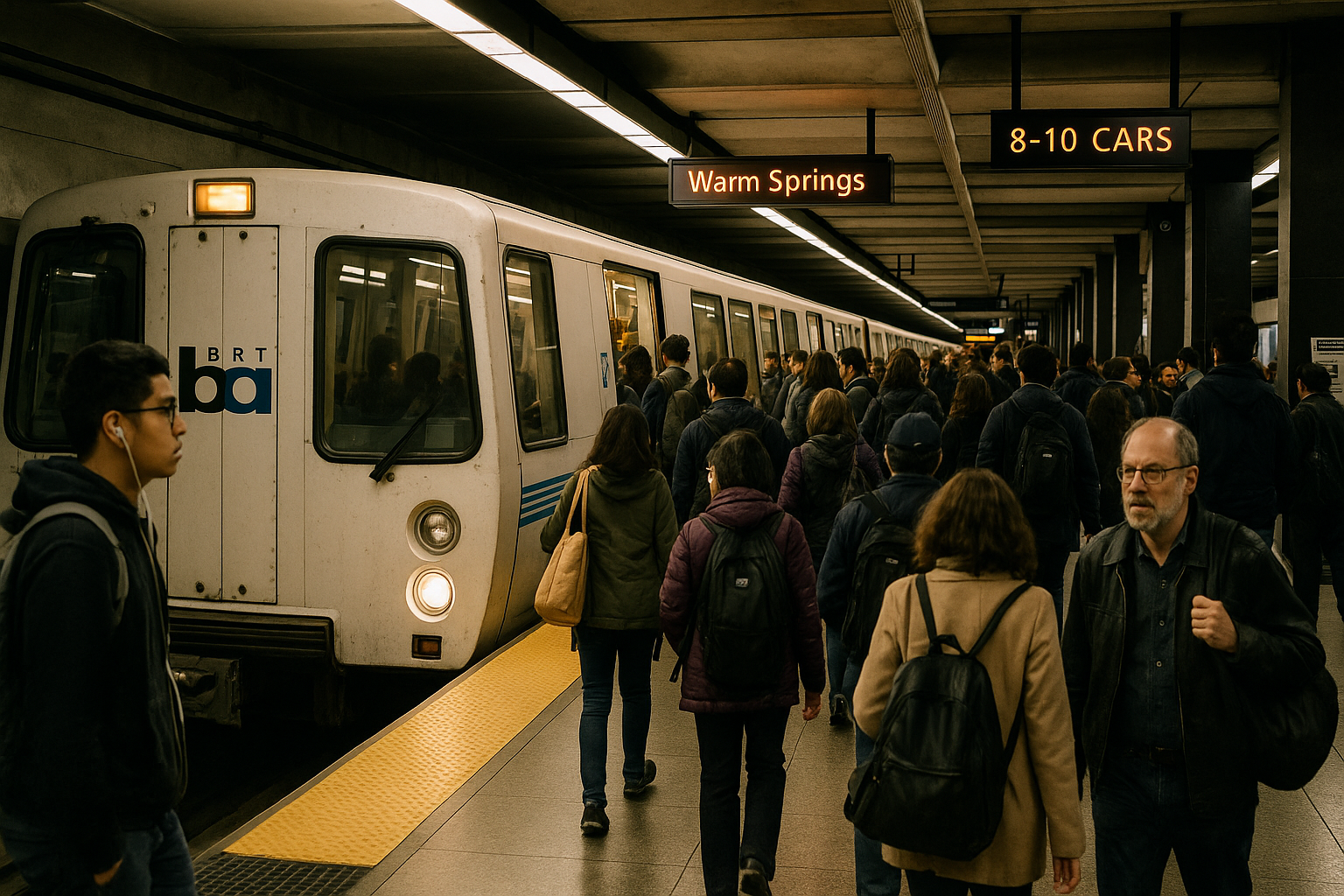Bay Area Rapid Transit: Serving San Francisco
Published: June 30, 2025
By: Adam Burns
Bay Area Rapid Transit, or BART, is an integral component of transportation in the San Francisco Bay Area, California. Since its inception, it has transformed the region's mobility infrastructure, serving millions of passengers annually. This article provides a detailed account of BART, from its history and development to its modern-day operation and impact on the Bay Area's growth and sustainability.
History and Development
The concept of BART originated in the late 1940s and early 1950s, a period marked by rapid population growth and urban expansion in the Bay Area. As traffic congestion increased, regional planners began to envision a rapid transit system to ease the situation. The Bay Area Rapid Transit District was formed in 1957 following voter approval in the counties of Alameda, Contra Costa, and San Francisco. BART was intended to connect peripheral districts with San Francisco, facilitating easier and faster commutes.
Construction of BART began in the early 1960s, with groundbreaking ceremonies held in 1964. The development was ambitious, involving the construction of underground, elevated, and surface-level tracks, as well as the integration of advanced technologies for its time. Original designs included plans for a futuristic transit system with automated trains and a dedicated transbay tube connecting Oakland and San Francisco under the San Francisco Bay.
Launch and Expansion
BART commenced operation on September 11, 1972, with the first passenger segment running between MacArthur in Oakland and Fremont in the East Bay. The subsequent opening of additional lines expanded coverage, with the notable inclusion of the pivotal transbay service. During the next decade, BART extended its reach north to Richmond, south to Daly City, and further east to Concord.
Over the years, BART has undergone significant expansions to serve the growing needs of the Bay Area's residents. The most notable project was the opening of the San Francisco International Airport (SFO) extension, providing a direct link to the airport and boosting the region's connectivity. Additional extensions, such as the Warm Springs-South Fremont and Berryessa/North San Jose extensions, underscore BART’s ongoing commitment to expanding its network.
Current Operations
Today, BART serves as the backbone of public transit in the Bay Area, with daily ridership numbers reaching up to 405,000 on weekdays before the COVID-19 pandemic. The system operates on five main lines: the Richmond-Millbrae, Dublin/Pleasanton-Daly City, Antioch-SFO/Millbrae, Fremont/Richmond to Warm Springs/South Fremont, and the Berryessa/Milpitas lines.
The system features a total of 50 stations spread across approximately 131 miles of track, incorporating both elevated and subterranean sections. BART's rolling stock includes over 700 cars, with significant investments made in upgrading these vehicles to new, more efficient models. These new fleets feature comfortable seating, increased energy efficiency, and improved passenger information systems.
Technology and Innovations
Innovation and technology have played a pivotal role in BART's evolution. The transit system was among the first to use automated train control, supplementing driver assistance with computerized systems to maintain schedules and manage operations efficiently. Recent technological enhancements include advanced signaling systems and real-time updates providing passengers with up-to-date information about train arrivals and service disruptions.
Furthermore, BART has been proactive in enhancing customer experience through digital integration, offering mobile ticketing and contactless payment solutions to streamline access. In maintaining a focus on sustainability, BART has also integrated renewable energy sources and energy-efficient practices into its operations, such as regenerative braking systems that return energy to the grid.
Challenges and Future Prospects
Despite its successes, BART faces ongoing challenges typical of metropolitan transit systems. Aging infrastructure, budget constraints, and rising operational costs necessitate continuous maintenance and upgrades. Moreover, the COVID-19 pandemic significantly impacted ridership levels, highlighting the need for adaptive strategies to regain commuter confidence and ensure the system's financial stability.
Future prospects for BART include additional expansions and modernization projects. Notable among these is the BART Silicon Valley Extension, designed to extend service further into Santa Clara County, with stations planned in central San Jose and Santa Clara. These developments are part of a broader vision to form an integrated, seamless transit network spanning multiple counties.
Moreover, BART is committed to addressing environmental sustainability, aiming for carbon neutrality by 2030. Initiatives include harnessing solar and wind energy, improving energy efficiency, and enhancing access to clean public transportation options. Complementing these efforts are plans to upgrade stations and rolling stock, ensuring that infrastructure meets modern standards and remains inviting for passengers.
Impact on the Bay Area
The impact of BART on the Bay Area is profound, influencing urban planning, economic development, and social dynamics. As a key component of the region's transit infrastructure, BART has facilitated greater accessibility and economic integration, supporting both commuter and freight transportation. The proliferation of transit-oriented development exemplifies BART's role in shaping urban growth, fostering sustainable communities, and mitigating urban sprawl.
Socially, BART has enhanced connectivity across diverse neighborhoods, providing vital links between communities and promoting inclusivity. It has made significant contributions to environmental preservation by offering a viable alternative to car travel, thereby reducing emissions and congestion. This impact aligns with broader policy goals aimed at creating a sustainable urban environment.
Bay Area Rapid Transit represents more than just a transportation system; it is a vital artery that sustains the life of the region. Through constant innovation, expansion, and a commitment to sustainability, BART continues to adapt to the challenges of modern urban transit.
Its legacy is one of connectivity and progress, reflecting the visionary spirit of the Bay Area in addressing mobility challenges while promoting sustainable urban development. As BART navigates future challenges and opportunities, it is poised to remain an indispensable component of the Bay Area's infrastructure, economy, and community life.

